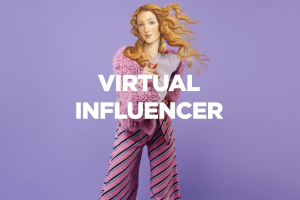 Questo post raccoglie alcuni interventi relativi al progetto Open to Meraviglia lanciato dal Ministero del Turismo nell’aprile del 2023 e che ha suscitato pareri discordanti.
Questo post raccoglie alcuni interventi relativi al progetto Open to Meraviglia lanciato dal Ministero del Turismo nell’aprile del 2023 e che ha suscitato pareri discordanti.
Presentazione sul sito del Governo (20.04.2023) (link – permalink)
Presentata la nuova campagna di promozione dell’Italia nel mondo “Italia: open to meraviglia”, realizzata da Ministero del Turismo ed Enit con il contributo del Dipartimento per l’Informazione e l’Editoria della Presidenza del Consiglio. La campagna ha come testimonial la Venere di Sandro Botticelli: riconoscibile da tutti attraverso lo sguardo e il segno inconfondibile dei suoi capelli, questa “virtual influencer” viaggerà lungo lo Stivale raccontandone i paesaggi, le mete iconiche delle città d’arte così come i piccoli borghi, le tipicità enogastronomiche e le tante declinazioni dell’offerta turistica che rendono così unico il patrimonio dell’Italia.
Il boom del turismo pasquale, che ha visto l’Italia come seconda tra le mete europee maggiormente visitate e ha registrato il ritorno record dei turisti statunitensi, fa presagire che il 2023 sarà un anno di grande intensità. Un rinnovato momento del turismo italiano, contrassegnato anche dalle politiche del Governo a beneficio del settore.
Campagna social – Analisi di Paolo Attivissimo (link)
Le valutazioni del Prof. Pier Luigi Sacco (29.04.2023) (link)
The most dangerous misconception about the digital and the way it impacts on our lives is to think of it mainly in terms of technology. Actually, the digital is mainly about behaviors and, before that, attitudes. Technology is just a consequence.
The failed campaign on Botticelli’s Venus is a textbook example. The goal is to make an institutional campaign to promote tourism in Italy to address the young generations and the ‘big idea’ is to recruit a (manipulated) version of Botticelli’s Venus as a… digital influencer ( = it’s the technology). But to recruit to do what? In this case, to serve a 90s-like, mono-thematic rosy-glasses, stereotypical communication on Italy without any kind of irony or critical spirit.
Whatever the technology, the hallmark of digital ecosystems is that they will critically dissect the message and hijack its meaning and aesthetic codes in many possible ways, mostly through tailor-made memes, while extensively screening the sources and uses of all bits of visual, textual, or contextual information of the campaign ( = it’s attitudes and behaviors).
At this point, if I am aware of this, I anticipate the process and offer a message that can only benefit from this critical scrutiny, dissection, and amplification.
How? By designing content that is self-ironic, polysemic, and that can be used as a platform to provide new creative ideas, stimulate engagement and co-creation, and may even become a vehicle for social causes. Even the inevitably critical parts of the new content will find a welcoming and constructive context to land upon, and this will enable and even inspire the production of more positive, targeted content rather than self-defensive barrages from the campaign organizer in the futile, pathetic effort of policing the use of the campaign content, which will only inspire new flames.
You can only spark the conversation, and then you are just part of it. You do not own it anymore. And if you insist, you are toast.
This is the power of collective intelligence (the real hallmark of the digital, whatever the technology) versus classical top-down, one-way communication that merely rhetorically plays with engagement and interaction but expects to keep a complete control of the whole process from start to finish and to sweep under the rug any kind of dissent or dissonance with respect to the communication goals.
Thinking in terms of attitudes and behaviors and considering the technology as the medium and not the message makes all the difference in the world. Thinking in terms of technology as the campaign driver can only be delusional.
That’s the digital, baby. The digital! And there’s nothing you can do about it.